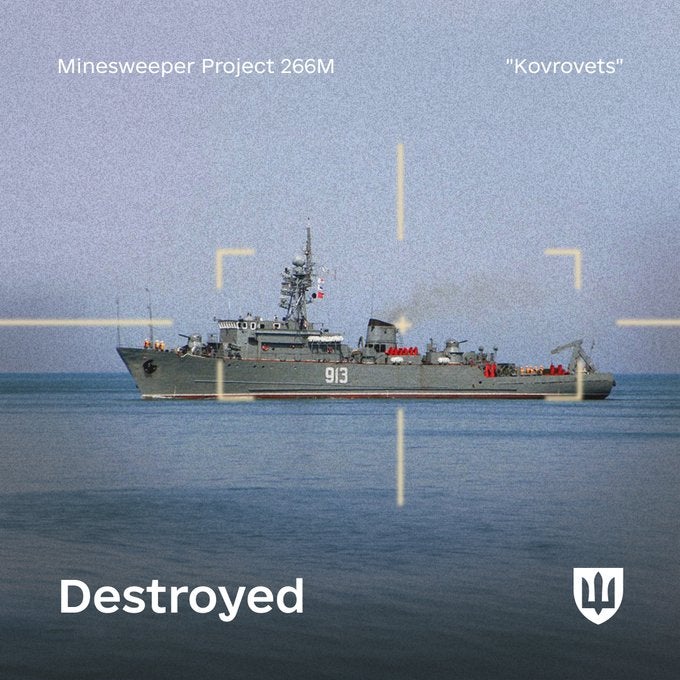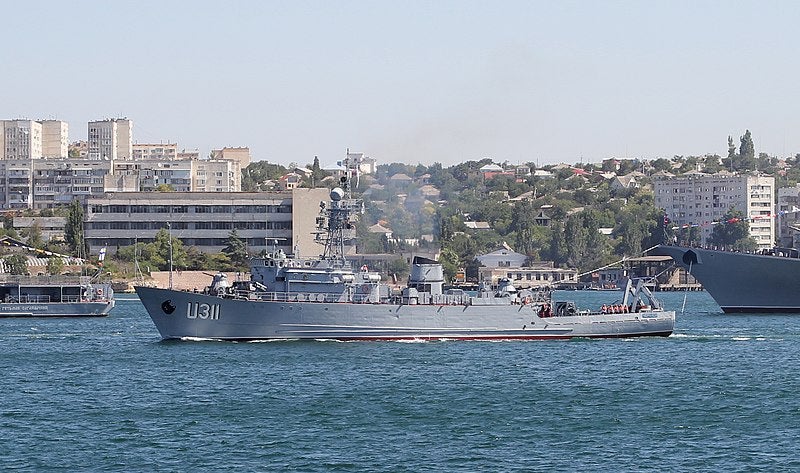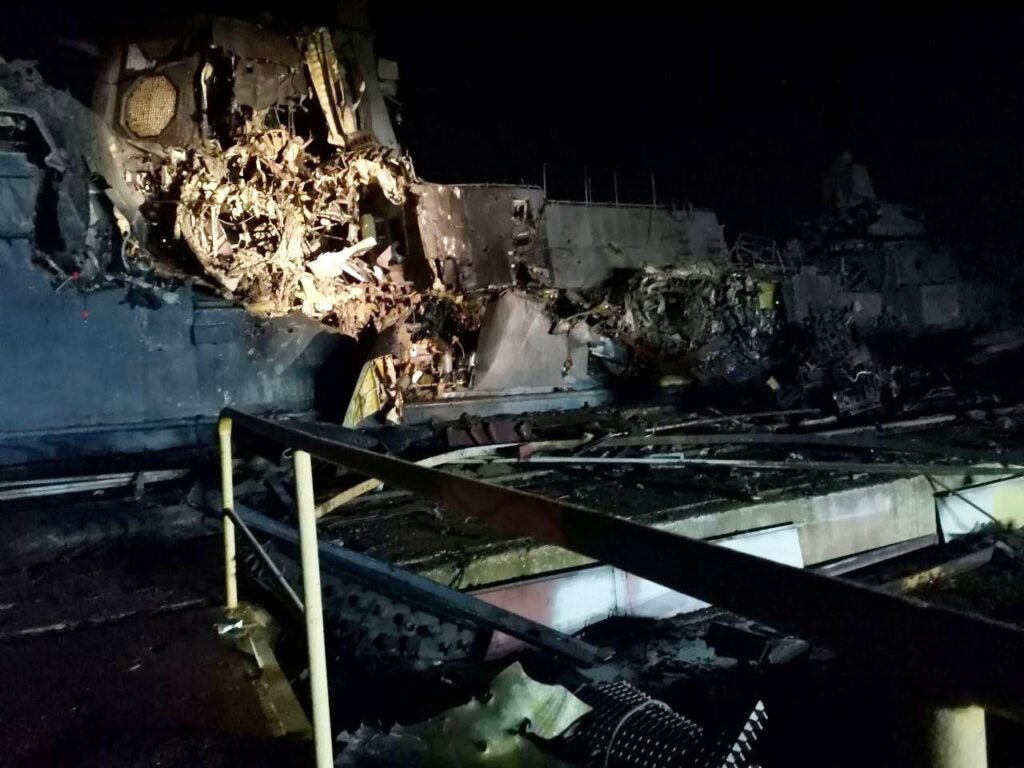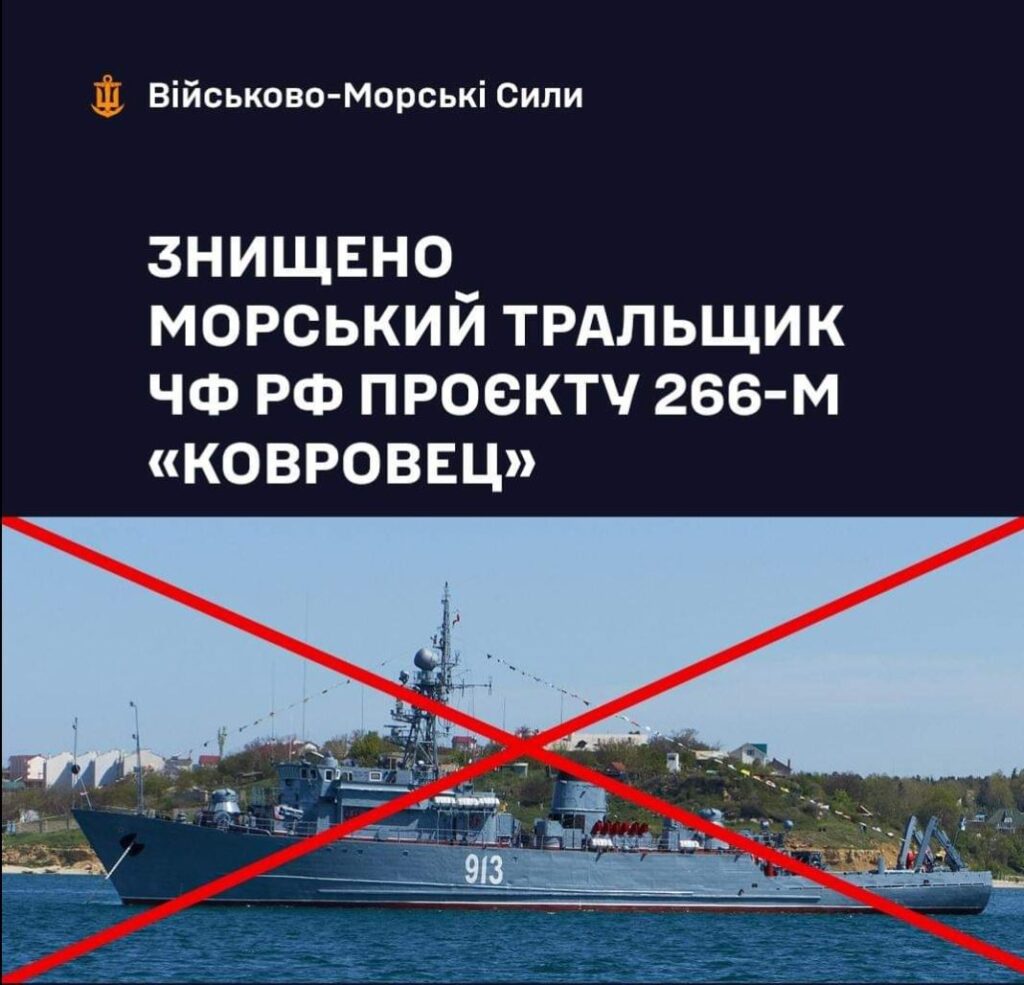Ukrainian Navy Destroys Another Minesweeper Belonging To The Russian Black Sea Fleet
In retaliation for the Moscow regime’s recent attacks, the Ukrainian Defense Forces destroyed the Russian Black Sea Fleet’s second and final Project 266-M class minesweeper, Kovrovets, during a large-scale bombardment of occupied Crimea on Sunday. The first ship of this type, Ivan Golubets, was heavily damaged on October 30, 2022, along with the missile frigate RFS Admiral Makarov (799), the flagship of Project 11356R/M, during the Ukrainian Navy’s attack on the port of Sevastopol with 9 unmanned aerial vehicles and 7 autonomous unmanned surface vehicles.

The Ukrainian Navy’s press service has yet to comment on the details of the attack on 266-M ‘Kovrovets’. However, according to reports from some X and telegram channels, the Soviet-era Russian minesweeper was anchored in the port of Sevastopol when it was damaged as part of a combined attack involving MGM-140 ATACMS tactical ballistic missiles, Vilkha multiple rocket launcher systems (which reportedly have a greater range than HIMARS), and unmanned aerial vehicles.
Another Russian vessel which may have been damaged is the Project 22800 Krarakut class missile corvette, the Tsiklon. Russian social media channels have made unverified claims that the Tsiklon was hit during the same attack. However, Dmytro Pletenchuk, the Ukrainian Navy spokesperson told Radio Free Europe that “there is a high probability” that the missile corvette was hit and that they are awaiting confirmation through battle damage assesments. Pletenchuk added: “as soon as we get these results, we’ll make sure to inform the public. But indeed, there is a high chance that there’s no longer a single Kalibr carrier now in Crimea, if the information about Tsiklon is confirmed.”
Project 266-M ‘Akvamarin’ or Natya-class minesweepers were built in the 1970s and 1980s for the Soviet Navy and export customers. More than 50 of these ships have been built to replace the Yurka class (Soviet name: Project 266 Rubin) minesweepers. Prior to the war, there were six ships of this type in service with the Russian Navy’s Black Sea, Pacific, and Northern Fleets. In addition, as a result of the illegal annexation of Crimea in 2014, Russia seized two Natya-class minesweepers from the Ukrainian Navy, U310 Chernihiv and U311 Cherkasy. These ships’ fate is currently unknown.

The unexpected success of Ukraine, a country that technically has no navy, against Russia, which has been one of the countries with the strongest naval power in the world on paper since the beginning of the war, is not just about Project 266-M class ships. According to the Ukrainian Armed Forces, Russia, which had 74 warships in its fleet just before the 2022 invasion, has lost approximately 33% of its warships in the Black Sea Fleet as of early February 2024. These losses include at least 24 ships, including the Saratov (BDK-65) landing ship, the Olenegorsky Gornyak (BDK-91) landing ship, the Novocherkassk landing ship, the Moskva missile cruiser, the Askold missile corvette, the Ivanovets missile corvette, the Sergey Kotov patrol ship, and a Kilo-class submarine. These figures do not include smaller vessels like coastal patrol boats or auxiliary vessels.

The Ukrainian Navy’s success in the Black Sea is due to the military equipment it procured from its western partners, as well as its bold, innovative, and asymmetrical approach with the R-360 Neptune anti-ship missiles developed by the Luch Design Bureau in Kiev, bomb-laden unmanned vessels, and unmanned aerial vehicle systems. These and other approaches that shape future war patterns contain important lessons for countries with limited war experience.

